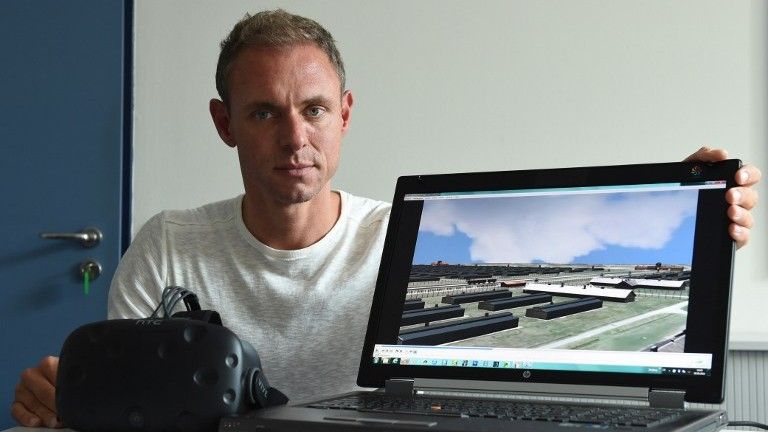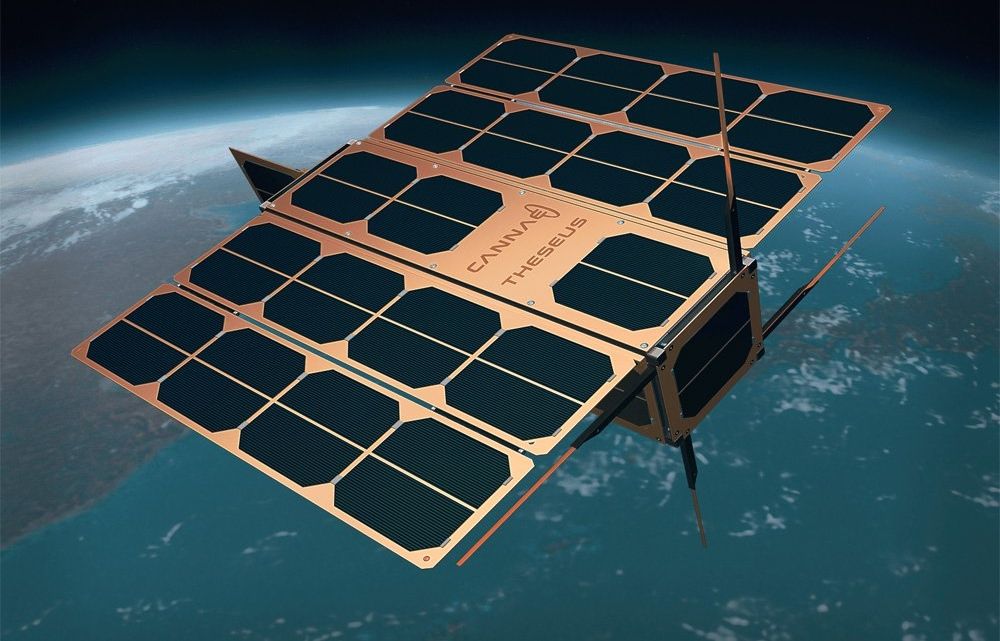Page 11179
Oct 2, 2016
Low-Cost Gene Editing Could Breed a New Form of Bioterrorism
Posted by Karen Hurst in categories: bioengineering, biotech/medical, terrorism
Oct 2, 2016
Virtual reality helps net last Auschwitz criminals
Posted by Karen Hurst in category: virtual reality
3D model allows German investigators to ‘walk through’ death camp and ‘see’ what Nazi suspects would have known about the killings.
Oct 2, 2016
Swiss manufacturer Küng brings the sauna tradition to the living room
Posted by Karen Hurst in category: futurism

https://youtube.com/watch?v=xgnuGhLdXx8
A sauna in the living room; I want one.
London Design Festival 2016: Swiss company Küng has designed a series of saunas that can be installed in the living room to take advantage of limited living space.
Continue reading “Swiss manufacturer Küng brings the sauna tradition to the living room” »
Oct 2, 2016
Split-Ring Resonators Add to SIW Bandpass Filter
Posted by Karen Hurst in category: materials
Nice read.
When square CSRR cells were cascaded (Fig. 12), a compact SIW circuit was achieved with bandpass response, with low return and insertion losses from 7.2 to 10.0 GHz. This compact bandpass filter has dimensions of 34 × 18 mm2 and is formed from three cascaded CSRR cells. It was simulated from 4 to 10 GHz with simulated results of −33.1-dB minimum return loss and 0.3-DB insertion loss at 8.8 GHz (Fig. 13).
The miniature CSRR-loaded SIW bandpass filter shows reasonable insertion and return losses from 7.2 to 9.8 GHz. This technology, of fabricating CSRR cells with SIW transmission lines on low-loss microwave substrate materials, shows great promise for the creation of compact bandpass filters at microwave frequencies.
Continue reading “Split-Ring Resonators Add to SIW Bandpass Filter” »
Oct 2, 2016
Scientists Make Neurons Directly From Human Skin
Posted by Karen Hurst in categories: biotech/medical, neuroscience
Nice.
Researchers have come up with a way for making functional neurons directly from human skin cells, including those taken from patients with Alzheimer’s disease. Alzheimer’s Reading Room Asa Abeliovich The new method may offer a critical short cut for generating neurons for replacement therapies of the future, according to research published in the August 5th …“Scientists Make Neurons Directly From Human Skin”
Oct 2, 2016
Scientists Have Taken a Big Step Toward Curing HIV
Posted by Shane Hinshaw in category: biotech/medical
British scientists are optimistic that they might be on the way to finding a cure for HIV after a promising clinical trial, in which a test patient was shown to have no symptoms of the virus following treatment.
Oct 2, 2016
Science, Technology, and the Future of Warfare
Posted by Karen Hurst in categories: 3D printing, biotech/medical, computing, economics, existential risks, governance, military, nanotechnology, policy, robotics/AI, science, security
Nice POV read.
We know that emerging innovations within cutting-edge science and technology (S&T) areas carry the potential to revolutionize governmental structures, economies, and life as we know it. Yet, others have argued that such technologies could yield doomsday scenarios and that military applications of such technologies have even greater potential than nuclear weapons to radically change the balance of power. These S&T areas include robotics and autonomous unmanned system; artificial intelligence; biotechnology, including synthetic and systems biology; the cognitive neurosciences; nanotechnology, including stealth meta-materials; additive manufacturing (aka 3D printing); and the intersection of each with information and computing technologies, i.e., cyber-everything. These concepts and the underlying strategic importance were articulated at the multi-national level in NATO’s May 2010 New Strategic Concept paper: “Less predictable is the possibility that research breakthroughs will transform the technological battlefield … The most destructive periods of history tend to be those when the means of aggression have gained the upper hand in the art of waging war.”
As new and unpredicted technologies are emerging at a seemingly unprecedented pace globally, communication of those new discoveries is occurring faster than ever, meaning that the unique ownership of a new technology is no longer a sufficient position, if not impossible. They’re becoming cheaper and more readily available. In today’s world, recognition of the potential applications of a technology and a sense of purpose in exploiting it are far more important than simply having access to it.
Continue reading “Science, Technology, and the Future of Warfare” »
Oct 2, 2016
World War 3 Warning: Space War ‘Challenge’ Looming With China And Russia, U.S. Strategic Command General States
Posted by Karen Hurst in categories: existential risks, government, military, robotics/AI, satellites
A top U.S. general has issued a sobering warning that both China and Russia, given their years of emphasis on upgrading and renovating their space war arsenals, could, in the future, place the United States in a position of weakness if matters were to degenerate into a state of war between the countries. Air Force Gen. John E. Hyten believes that China and Russia have been attempting to outpace the U.S. in military matters with regard to space and that the Pentagon is now moving to counter the foreseen “challenge” of possibly being outmaneuvered and outgunned in space. If a World War 3 scenario were to actualize, he thinks the U.S. should be prepared to meet said challenge.
The Washington Times reported last week that Air Force Gen. John E. Hyten, who has been chosen as the next commander of Strategic Command, told Congress’ Senate Armed Services Committee that the U.S. is moving to counter the threat of a space war disadvantage with China and Russia. He said China and Russia are currently in the process of developing anti-satellite missiles, laser guns, and maneuvering killer space robots that could, once deployed, knock out or incapacitate strategic U.S. communications, navigation and intelligence satellites. As military experts know, these craft are crucial to the maintenance and actionability of America’s high-technology warfare systems.
“The Department of Defense has aggressively moved out to develop responses to the threats that we see coming from China and Russia. I believe it’s essential that we go faster in our responses.”
Oct 2, 2016
Move Over EmDrive, Here Comes Woodward’s Mach Effect Drive
Posted by Andreas Matt in categories: physics, space travel
An exotic “impossible” space propulsion technology known as “Cannae Drive,” less known than the EmDrive but equally controversial, made news headlines a few weeks ago with the announcement that it is about to be tested in space. There are speculations that the Cannae Drive could exploit physics known as “Mach Effect.” But perhaps the same physics plays a role in the EmDrive as well.
Cannae Inc., the company formed by engineer Guido Fetta to commercialize Cannae Drive technology, announced the forthcoming launch of a cubesat to test its space propulsion technology. “Cannae’s technology requires no on-board propellant to generate thrust and will provide station-keeping for a cubesat flying below a 150-mile orbital altitude,” claimed the announcement. “The demonstration satellite will remain in this orbit for a minimum of six months.”
Ending a wave of speculations on the similarities between Cannae Drive technology and the anomalous EmDrive effect, Fetta posted a clarification a few days ago:
















